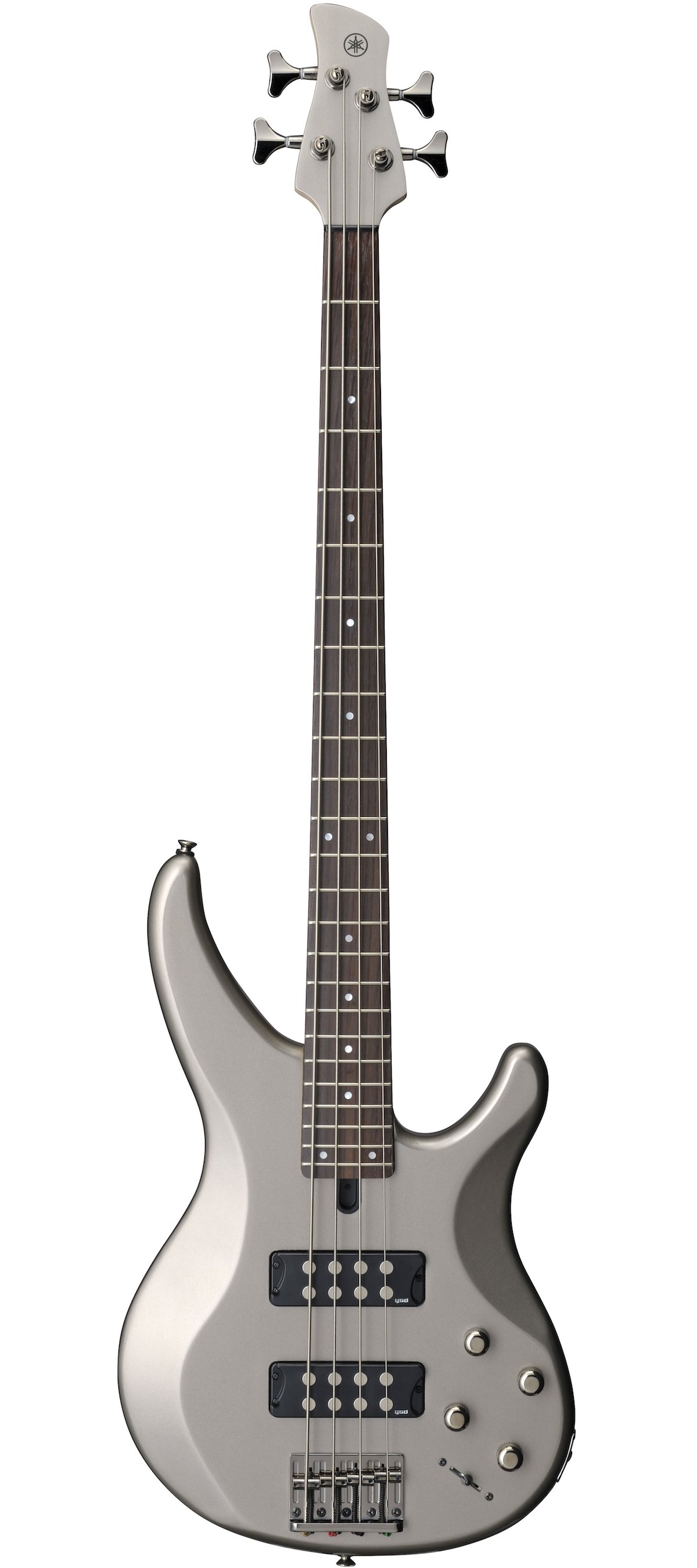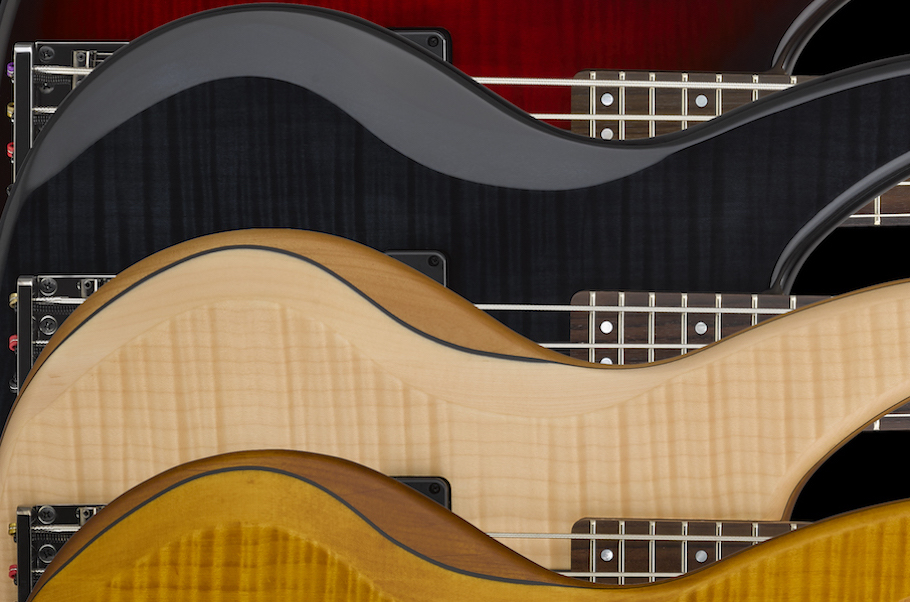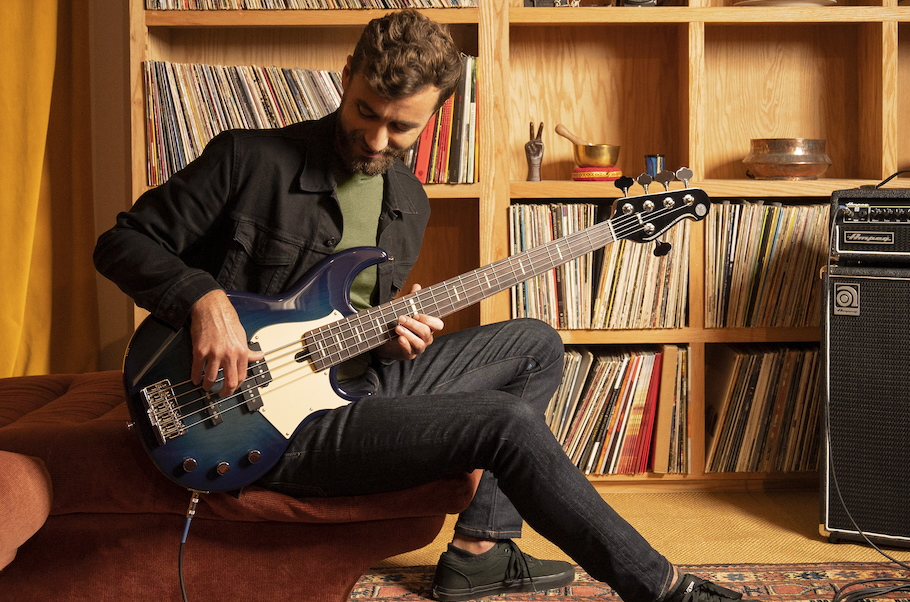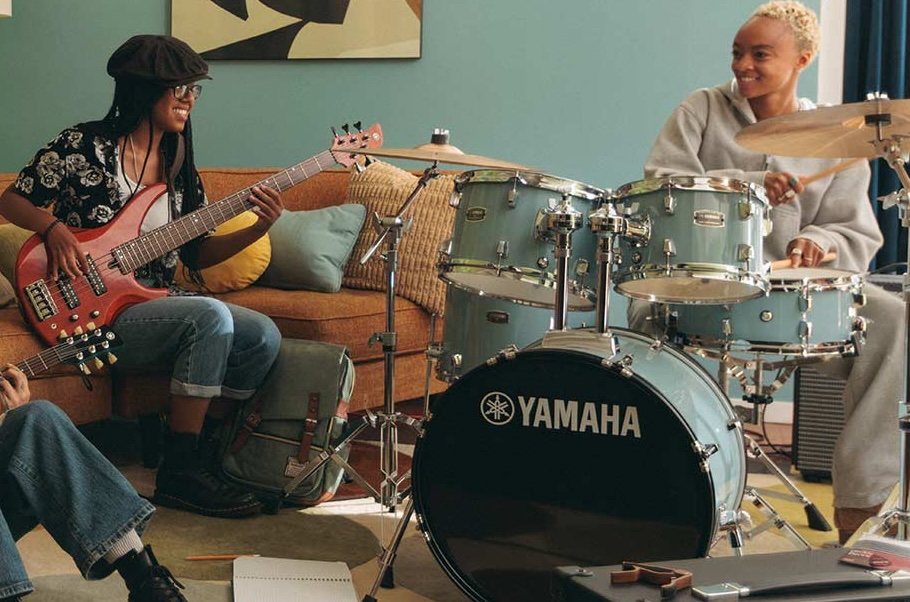Which Bass are You?
RBX, TRBX or BB — which is your soulmate?
I was born in 1966, the same year Yamaha first started making electric basses (as well as guitars and amps). So what, you ask? Well, for one thing, it means I’ve been circling the sun for a lot longer than I care to admit. It also means that Yamaha knows more than a thing or two about making great basses. They started strong — my ’72 SB-70 is an early example — and they keep getting better at it as time goes by.
Whether you’re buying your first bass, stepping up to one that better suits your evolving needs, or adding to your growing bass arsenal, the buying process is always an exciting one. Knowing what you need a new bass for, what features matter most to you and what you can afford are all factors that will help you zero in on your target. But know this: Yamaha’s got every angle covered with its RBX, TRBX and BB basses.
Let’s take a closer look at each.
RBX
If you’re a student or someone new to the world of bass playing, you might want to start by checking out the two Yamaha RBX models: the RBX170 and RBX170 EW. Both are four-string instruments with largely identical specs (though the RBX170EW has a slightly higher price tag thanks to an attractive mango veneer top on the body and headstock), but they’re both rather unique when compared to the packed crowd of beginner basses out there.
The lightweight RBX basses are very easy on the eyes, the back and the wallet, giving inexperienced players a serious yet affordable option packed with the kind of performance features and craftsmanship you’d expect from much more expensive instruments.
They’re perfect for honing your chops because they’re especially easy to play. Thanks to a double cutaway basswood body and a C-shaped, satin-finished bolt-on maple neck with a 24-fret rosewood fingerboard, both RBX models have a comfy, natural feel. The split- coil pickup in the middle and a single-coil in the bridge position give you sonic versatility for any situation, with low-end beefiness and lots of high-end articulation. RBX instruments are best for beginners looking for a very playable bass they can learn on and grow into. It’s also a great choice for intermediate bassists on a budget who need an instrument that delivers the goods and looks good doing it.
TRBX
The jump from novice to serious player comes not only with experience and proficiency, but also with the awareness that your bass needs certain design and performance characteristics — such as advanced pickups and active EQ circuitry, neck and neck joint construction, and body woods — to help you create your signature sound. Yamaha TRBX basses are designed for players who’ve had this realization and are ready to take things to the next level.
There are five “series” within the TRBX line: the 170 Series, 200 Series, 300 Series, 500 Series, and 600 Series. The lower the number, the less expensive the model and the fewer features offered, but make no mistake: these are all quality instruments.
The TRBX174 and TRBX174EW (with its exotic laminate top) are comparable to the RBX170/RBX170EW overall but boast a mahogany body instead of basswood for longer sustain and punchier mids. The TRBX204 comes with a basswood or alder body and is equipped with a two-band active EQ circuit — slightly more sophisticated than the fully passive RBX and 170 Series TRBX models, but not as high-tech when compared to the other TRBX models.
TRBX 300 Series, 500 Series and 600 Series instruments, all of which are available in both four-string and five-string configurations (click here for more information about the difference), are equipped with the same four-bolt neck joint as other Yamaha basses, but add a five-piece mahogany/maple neck, a high mass bridge, 3D sculpted bodies and two hum-cancelling pickups. The differences between the models come down to the choice of body woods (mahogany or flamed maple/alder) for tone and appearance, and the EQ circuits (EQ presets, two- or three-band EQ circuits, and/or active/passive switching).

Overall, the TRBX line represents a serious jump up from the RBX line, and all TRBX models deliver major performance for discerning players. This higher level of sophistication makes the TRBX 300 Series a tantalizing option for beginners who are willing to spend a little more. Intermediate and professional bassists who want refined control over their sound and are looking for a more responsive and inspirational instrument should consider the TRBX 500/600 models, all of which offer active/passive switching. (For more information on the differences between active and passive basses, click here.) The choice boils down to the sound and aesthetic you prefer.
BB
The Yamaha BB bass developed a cult-like following soon after its introduction in 1977. The current BB instruments have the same “built for the working bassist” intent but now flaunt a slightly thinner neck and a lighter body, improving playability on stage and in the studio without sacrificing any of their characteristic penetrating tone or punchiness.
Like the TRBX, the BB line encompasses several “series,” each offering models in both four-string and five-string configurations. The 200 Series basses are the least expensive; they offer a great alternative to intermediate players who expect solid performance and prefer a more traditional design than that of the progressive TRBX series. The 400 Series, 700 Series and Pro Series BB models all feature Graphtec nuts, a Vintage Plus Bridge (which incorporates “diagonal thru-body stringing,” where strings are angled at the saddle and pass through the instrument to the bridge at a 45º angle), and a six-bolt miter neck joint for improved sustain and enhanced resonance.
The 400 Series includes the BB434, BB434M (“M” is for maple fingerboard) and the five-string BB435 models. Each features VSC5b split- and single-coil Alnico V pickups. The 700 Series includes the BB734A and five-string BB735A. Both are switchable between active and passive modes, and feature alder/maple/alder body construction, VSC7b split- and single-coil Alnico V pickups, plus a heavier steel plate bridge for a brighter tone.
Last but certainly not least, the top-of-the-line Pro Series encompasses the BBP34 and five-string BBP35 models. These are passive basses equipped with VSC7b pickups, alder/maple/alder body construction, Vintage Plus Convertible stringing and a steel plate bridge. Notably, the BBP basses also feature proprietary Initial Response Acceleration (IRA) technology, which releases stresses created during construction by applying specific vibrations to the completed instruments for a “played in” bass.
The BB line is undoubtedly intended for serious bassists who play for a living or aspire to do so. I plugged a BBP34 into my ’67 Ampeg SB12 amp, and what I got back was nothing short of magic. The bass and the amplifier complemented each other perfectly, richly rewarding me with deep, buttery tone. From single notes, staccato riffs and full chords to sustained harmonics and languorous double stops, the BBP34 could do no wrong in terms of tone, intonation and action. For me, it was love at first sight.
So which bass are you? It’s a purely personal choice, but you’ll have a lot of fun figuring out which one best expresses your unique musical voice.
Check out Michael’s other blog postings.
Click here for more information about Yamaha basses.
























